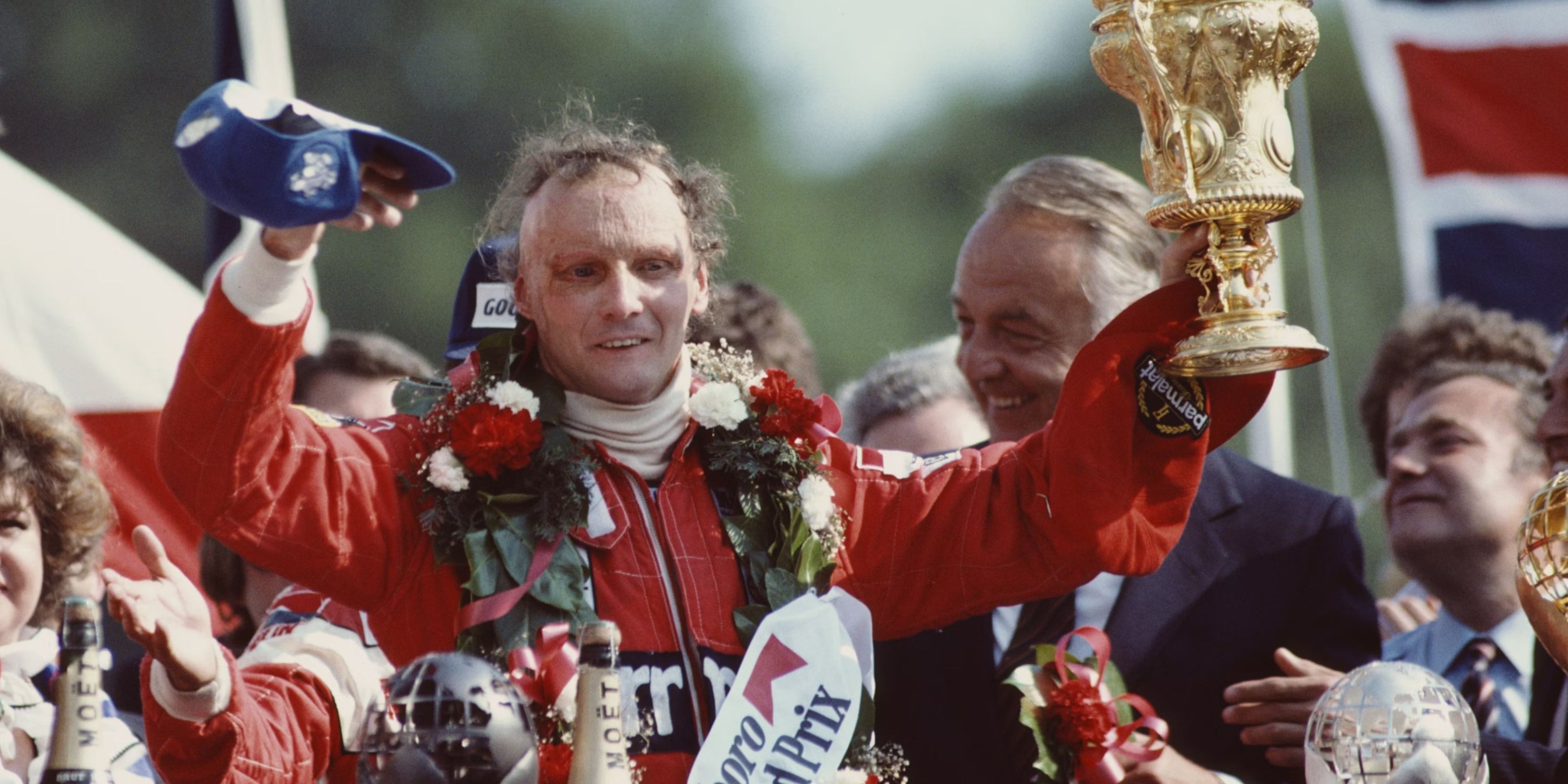Niki Lauda was never one to stand down from a challenge, as this story shows...
After winning the Championship in 1975, the Austrian suffered an awful accident in the 1976 German Grand Prix.
Niki Lauda's crash at the 1976 German Grand Prix
Nicknamed "The Green Hell", the Nürburgring was a challenging course known for its unpredictable weather conditions and its relentless series of high-speed corners, dips, and crests over its 14-mile length. On August 1, 1976, during the German Grand Prix, it became the scene of one of the most horrific accidents in the history of Formula One.
Lauda was driving his Ferrari 312T2 in treacherous conditions, having lobbied for the race to be abandoned. His concerns were overruled, and the race proceeded. On the second lap, disaster struck. Lauda's car swerved off the track at high speed, hitting an embankment before ricocheting back onto the track and bursting into flames. He was trapped in the inferno, and the race continued around him.
Fellow drivers Arturo Merzario, Guy Edwards, Brett Lunger, and Harald Ertl risked their own lives to stop and pull Lauda out of the wreckage. By the time they extracted him, Lauda had suffered severe burns, particularly to his head. The toxic gases he had inhaled damaged his lungs, and he fell into a coma.
Lauda's injuries were devastating. The burns to his face and scalp were so severe that part of his right ear was lost, and his eyelids and tear ducts sustained significant damage. The inhaled hot toxic fumes further harmed his internal organs, and he was given the last rites by a priest at the hospital.
Yet, remarkably, he did not succumb to his injuries. Showing a formidable willpower that astounded doctors, his team, and spectators alike, he chose to fight on. Despite his excruciating pain, Lauda was back in the cockpit of his Ferrari just six weeks later, at the Italian Grand Prix. His return was a display of unyielding determination and pure courage.
His comeback, though valiant, was a tormented one. The wounds from his crash had not fully healed, and he had to endure the agony of having his helmet fitted over the raw, exposed flesh. Yet, he managed to finish fourth, a testament to his extraordinary resilience.
Lauda's crash at the Nürburgring, more than any of his numerous victories, came to define his career and his character. The accident changed him physically, but it also showcased his incredible mental fortitude. It is a remarkable story of resilience and courage that transcends sport, inspiring countless people around the world.
Niki Lauda confronts rude journalist
This all said, after missing out on the 1976 title to James Hunt, the following year he won the 1977 championship - and also took the opportunity to confront a journalist that had been rude to him in the past about his looks because of the crash.
“I know you don’t I?” Lauda asked a journalist.
“I don’t think so” the journalist replied.
However, the Austrian was adamant that he knew the individual: “I remember. You’re the guy who asked me what my wife would do now that I was ugly.”
Lauda lifted his championship trophy, pointed to the journalist and said:
“Well, you can shove this up you’re a***.”
The F1 legend had silenced his hater, face to face.
After that, Lauda went on to retire in 1979 after frustration with his Brabham BT46B which kept spinning out for the whole of his Brabham-Alfa Romeo tenure.
However, the Austrian came back in 1982 and joined McLaren.
Lauda won his third and last championship in 1984 by half a point over his teammate Alain Prost.
He announced his retirement at his home country’s Grand Prix in 1985.
In Lauda’s post-driving career, his love for F1 never stopped, as he joined Mercedes as a non-executive chairman in 2013, helping them be the most dominant of F1 constructors.




















